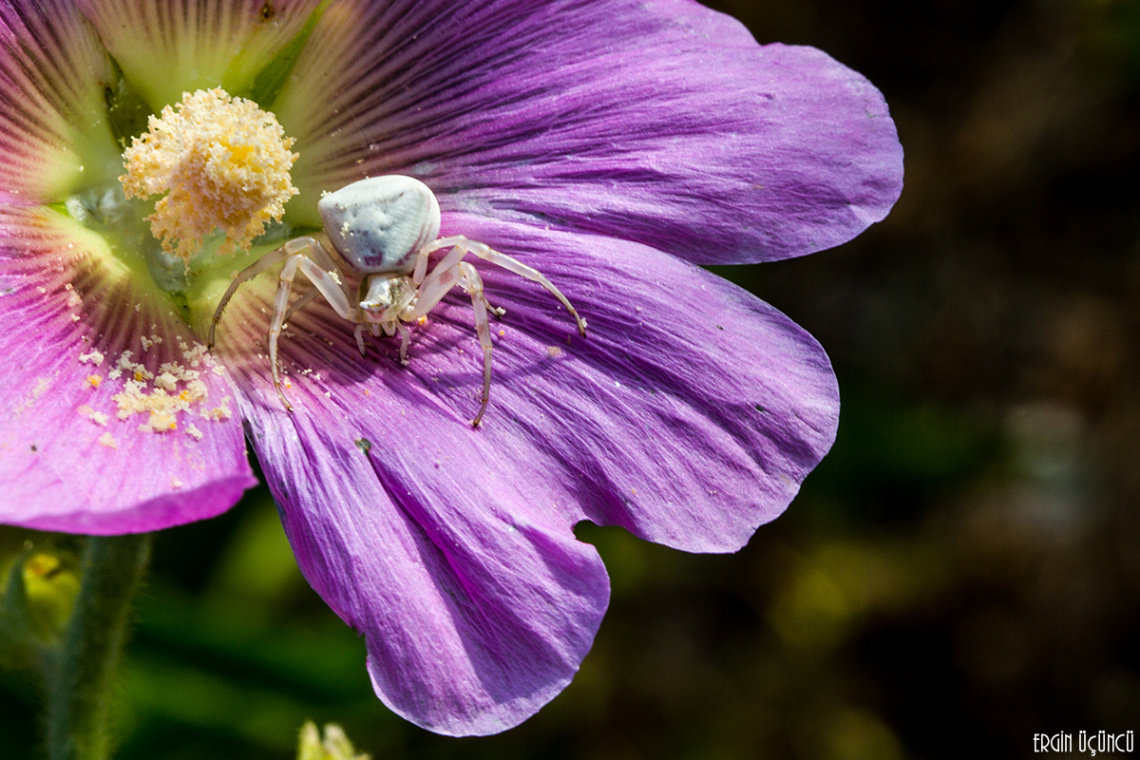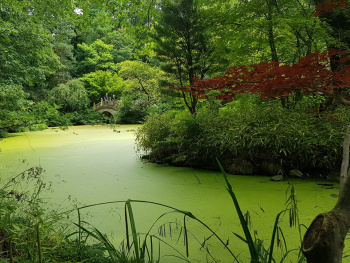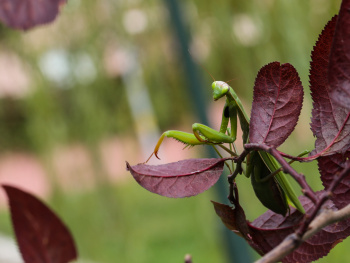
Description
Beyaz örümcek
Misumena cinsinin misumena vatia türü olan ve renkleri gereği halk arasında beyaz örümcek olarak bilinir. Özelliği ise yumurtalarına yaklaşan insanı hissettiğinde yumurtası aniden patlayıverir ve etrafındakilere zehir sıçratarak kör eder. O yüzden yumurtalarına fazla yaklaşmadan uzaktan ateş ederek yok edin. Örümceğin kendisi ise zehirli ve yapışkan tükürükleri ile uzaktan saldırır. Ayrıca kurbanına yaklaşarak pençeleri ile vurabilir vuruşların hafif olmasına rağmen hayal görme ve hatta koordinasyon kabiliyetini yitirme etkisine sahiptir. Büyük örümceklerin vücutları mermi isabet ettiği zaman patlayabilir. Bu patlama da insanların gözleri için tehlikelidir. Örümcekler tüm mekanlarda çok hızlı hareket ederler zırhları zayıf olup çeşitli silahlar onları delmekte etkilidir.
Misumena vatia
Misumena vatia is a species of crab spider with holarctic distribution. In North America, where it is the largest and best-known flower spider, it is called the goldenrod crab spider or flower (crab) spider, because it is commonly found hunting in goldenrod sprays in the autumn.
These spiders may be yellow or white, depending on the flower in which they are hunting. Especially younger females, which may hunt on a variety of flowers such as daisies and sunflowers, may change color "at will". Older females require large amounts of relatively large prey to produce the best possible clutch of eggs. They are therefore, in North America, most commonly found in goldenrod (Solidago sp.), a bright yellow flower which attracts large numbers of insects, especially in autumn. It is often very hard even for a searching human to recognize one of these spiders on a yellow flower. These spiders are sometimes called banana spiders because of their striking yellow color.
The much smaller males scamper from flower to flower in search of females and are often seen missing one or more of their legs. This may be due either to near misses by predators such as birds or to fighting with other males.
When a male finds a female, he climbs over her head over her opisthosoma onto her underside, where he inserts his pedipalps to inseminate her.
The young reach a size of about 5 mm by autumn and spend the winter on the ground. They molt for the last time in May of the next year.
These spiders change color by secreting a liquid yellow pigment into the outer cell layer of the body. On a white base, this pigment is transported into lower layers, so that inner glands, filled with white guanine, become visible. If the spider dwells longer on a white plant, the yellow pigment is often excreted. It will then take the spider much longer to change to yellow, because it will have to produce the yellow pigment first. The color change is induced by visual feedback; spiders with painted eyes were found to have lost this ability.
The color change from white to yellow takes between 10 and 25 days, the reverse about six days. The yellow pigments have been identified as kynurenine and 3-hydroxykynurenine
Misumena cinsinin misumena vatia türü olan ve renkleri gereği halk arasında beyaz örümcek olarak bilinir. Özelliği ise yumurtalarına yaklaşan insanı hissettiğinde yumurtası aniden patlayıverir ve etrafındakilere zehir sıçratarak kör eder. O yüzden yumurtalarına fazla yaklaşmadan uzaktan ateş ederek yok edin. Örümceğin kendisi ise zehirli ve yapışkan tükürükleri ile uzaktan saldırır. Ayrıca kurbanına yaklaşarak pençeleri ile vurabilir vuruşların hafif olmasına rağmen hayal görme ve hatta koordinasyon kabiliyetini yitirme etkisine sahiptir. Büyük örümceklerin vücutları mermi isabet ettiği zaman patlayabilir. Bu patlama da insanların gözleri için tehlikelidir. Örümcekler tüm mekanlarda çok hızlı hareket ederler zırhları zayıf olup çeşitli silahlar onları delmekte etkilidir.
Misumena vatia
Misumena vatia is a species of crab spider with holarctic distribution. In North America, where it is the largest and best-known flower spider, it is called the goldenrod crab spider or flower (crab) spider, because it is commonly found hunting in goldenrod sprays in the autumn.
These spiders may be yellow or white, depending on the flower in which they are hunting. Especially younger females, which may hunt on a variety of flowers such as daisies and sunflowers, may change color "at will". Older females require large amounts of relatively large prey to produce the best possible clutch of eggs. They are therefore, in North America, most commonly found in goldenrod (Solidago sp.), a bright yellow flower which attracts large numbers of insects, especially in autumn. It is often very hard even for a searching human to recognize one of these spiders on a yellow flower. These spiders are sometimes called banana spiders because of their striking yellow color.
The much smaller males scamper from flower to flower in search of females and are often seen missing one or more of their legs. This may be due either to near misses by predators such as birds or to fighting with other males.
When a male finds a female, he climbs over her head over her opisthosoma onto her underside, where he inserts his pedipalps to inseminate her.
The young reach a size of about 5 mm by autumn and spend the winter on the ground. They molt for the last time in May of the next year.
These spiders change color by secreting a liquid yellow pigment into the outer cell layer of the body. On a white base, this pigment is transported into lower layers, so that inner glands, filled with white guanine, become visible. If the spider dwells longer on a white plant, the yellow pigment is often excreted. It will then take the spider much longer to change to yellow, because it will have to produce the yellow pigment first. The color change is induced by visual feedback; spiders with painted eyes were found to have lost this ability.
The color change from white to yellow takes between 10 and 25 days, the reverse about six days. The yellow pigments have been identified as kynurenine and 3-hydroxykynurenine
Photo info
Beyaz örümcek
- Category: Macro
- Photo by: Ergin Üçüncü
- Add Date: 03.08.2014 18:00
Lens : Canon EF 100mm f/2.8L Macro IS USM
Focal Length : 100 mm
Shutter Speed : 1/100 Sec.
Aperture : f/16
ISO / Film : 200
Tags: Beyaz örümcek Misumena vatia 3N1C0606 14.07.2014 spider örümcek beyaz örümcek makro örümcek macro spider örümcek resimleri örümcek fotoğrafları
- Statistics
- Likes66
- Faves31
- Views7831







